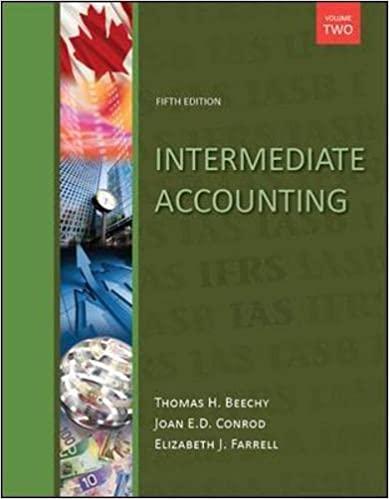In late 20X0, Winnipeg Valves Limited established a defined benefit pension plan for its employees. At the
Question:
In late 20X0, Winnipeg Valves Limited established a defined benefit pension plan for its employees. At the inception of the plan, the actuary determined the present value of the defined benefit obligation relating to employees' past services to be \(\$ 1\) million, as of the end of \(20 \mathrm{X} 0\). This amount vests over 10 years.
In each year following inception of the plan, the actuary measured the defined benefit obligation arising from employees' services in that year. These current service costs amounted to \(\$ 80,000\) in \(20 \mathrm{X} 1, \$ 82,000\) in \(20 \mathrm{X} 2\), and \(\$ 85,000\) in \(20 \mathrm{X} 3\). The costs were determined by using an actuarial cost method based on employees' projected earnings.
All actuarial obligations and funding payments were determined by assuming an interest rate of \(6 \%\), which was the long-term borrowing rate. This rate is also management's best estimate of the long-term rate of return on plan assets for the asset mix of the plan. In accordance with provincial legislation, the past service cost was to be funded over 15 years, the maximum period allowed. Current service costs were to be fully funded at the end of each year.
In \(20 X 4\) the actuary conducted the mandatory triennial revaluation. The revaluation revealed that the plan assets at the end of \(20 \mathrm{X} 3\) were \(\$ 611,471\). At this point, the average remaining service period of employees covered by the plan was 21 years. In conjunction with the actuary, management decided not to make any changes in assumptions, including the assumption that the long-term rate of return would be \(6 \%\). The actuary also determined that the current service cost for \(20 \mathrm{X} 4\) was \(\$ 87,500\). There was an experience gain of \(\$ 21,870\) on the pension plan obligation, arising in \(20 \mathrm{X} 4\). The actual plan earnings for \(20 \mathrm{X} 4\) were \(\$ 55,055\).
Required:
1. Determine the amount of pension expense for \(20 \mathrm{X} 4\). The company follows the policy of including all actuarial gains and losses in income in the year in which they arise.
2. Determine the amount of pension expense for 20X4. The company follows the policy of including all actuarial gains and losses in reserves and as an element of other comprehensive income in the year in which they arise.
3. Determine the amount of pension expense for \(20 \times 4\). Assume that the company is a private company and the company elects to use the simplified approach.
Step by Step Answer:






